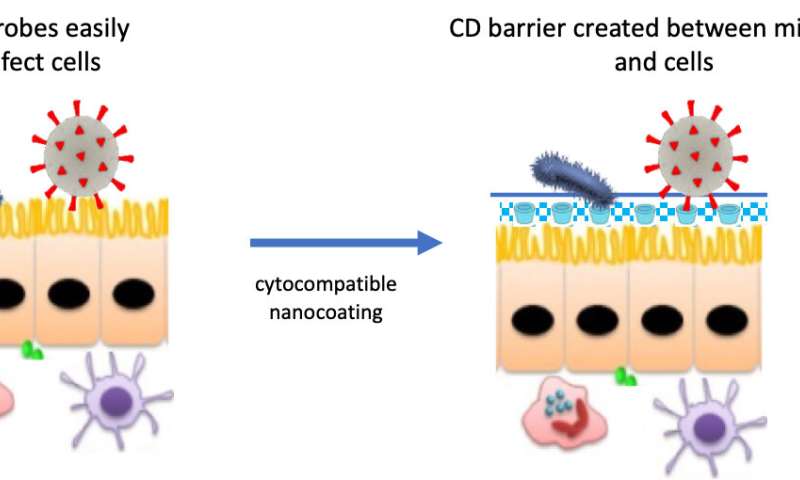Researchers bioengineer first-line defense against COVID-19

Researchers at the USC Dr. Allen and Charlotte Ginsburg Institute for Biomedical Therapeutics, the USC Institute for Technology and Medical Systems and the USC School of Pharmacy are developing an antimicrobial fluid to bolster the body’s first-line defenses against COVID-19.
The biocompatible coating is intended to block the virus from entering the body through membranes in the nose, eyes, and mouth. If successful, the invention could change the way medicine prevents certain infectious diseases.
Viral Invasion 101
Severe acute respiratory syndrome coronavirus 2 (SARS-CoV-2), the infectious agent that causes COVID-19, latches onto structures on the surface of our cells in order to invade. One of these membrane structures, known as a lipid raft, contains cholesterols and fats and acts as the subcellular equivalent of a dock at a seaport. Viral particles traversing our respiratory and gastrointestinal tracts hook onto lipid rafts, then enter our cells and use our cellular machinery to replicate.
A team of researchers led by USC Ginsburg Institute Director Mark Humayun, MD, Ph.D., are currently experimenting on a compound capable of disrupting this viral invasion pathway. The compound, known as cyclodextrin, packs a double punch: It not only removes cholesterol—an essential component of lipid rafts—from our cellular membranes to disrupt viral docking, it may also weaken the virus by stealing away its cholesterol and lessening its infectivity.
Bioengineering the ideal defense
Cyclodextrin derivatives can potentially wear many hats in the fight against infection. In the lab, scientists have shown that various iterations of cyclodextrin compounds can target formidable pathogens ranging from the varicella-zoster virus (chickenpox) to HIV. With support from the National Science Foundation, Humayun’s team is working to develop a cyclodextrin derivative specifically tailored to fight the novel coronavirus.
To speed up the development process, the team has designed a computer simulation to churn out various permutations of cyclodextrin derivatives and model their expected biological activities. The interdisciplinary team composed of engineers, physicians, a molecular biologist, a virologist and a pharmacologist will evaluate the options and select the structure that best targets SARS-CoV-2. They will then adapt the product into a liquid that can be administered in the eyes, nose or mouth to intercept the coronavirus before it can wreak havoc in the body.
In the future, this technology may be adapted to stave off other common infections or slow disease transmission in the case of another pandemic.
Source: Read Full Article



